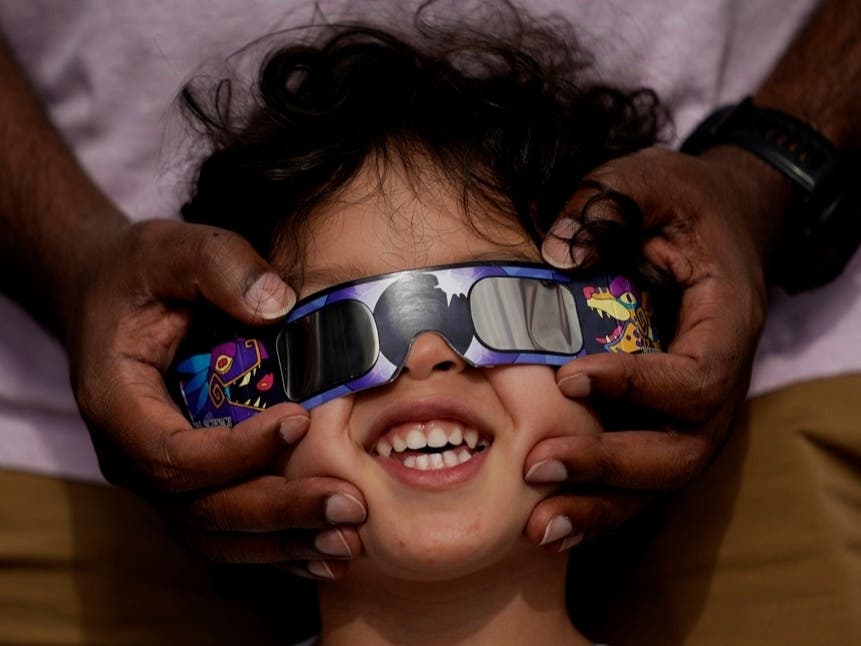Community Corner
Total Solar Eclipse Protective Eyewear Is A Must: What You Need
Even people living far outside the ribbon of states from Texas to Maine experiencing totality in the April 8 eclipse need eye protection.

ACROSS AMERICA — If you plan to take in the total eclipse of the sun on April 8, the right eye protection is crucial for safety. Sunglasses won’t cut it.
About 32 million Americans live in a ribbon of states from Texas to Maine live in the path of totality for the must-see celestial sensation, sometimes called the Great American Solar Eclipse. The spectacle will last up to 4 minutes and 28 seconds in the path of totality, about twice as long as the 2017 total solar eclipse.
In 2017, eclipse glasses sold out quickly and became as hard to find as toilet paper would become at the beginning of the coronavirus pandemic. If you’re planning to chase the moon’s shadow, procure your protective eye gear now.
Find out what's happening in Across Americawith free, real-time updates from Patch.
Except during the brief total phase of a total solar eclipse, when the moon completely blocks the sun’s bright face and only solar corona visible, it is unsafe to look directly at the sun without specialized eye protection to block harmful solar radiation, according or NASA.
Amazon has a wide collection of NASA-approved solar eclipse glasses, and the American Astronomical Society has more vendors whose eclipse glasses have been certified as safe. Wherever you acquire protective eyewear, it should meet or exceed the international safety standard of ISO 12312-2:2015.
Find out what's happening in Across Americawith free, real-time updates from Patch.
One other safe way to view the eclipse is with a do-it-yourself pinhole projector that shows the sun on a nearby surface. The American Astronomical Society has pinhole projector DIY instructions.
Eclipse chasers who plan to photograph the event or view it through binoculars or telescopes need to take precautions, too.
“Viewing any part of the bright Sun through a camera lens, binoculars, or a telescope without a special-purpose solar filter secured over the front of the optics will instantly cause severe eye injury,” NASA said.
Also, solar filters protect the camera’s imaging sensor as well as correct for the exposure, according to camera maker Nikon.
Get more local news delivered straight to your inbox. Sign up for free Patch newsletters and alerts.